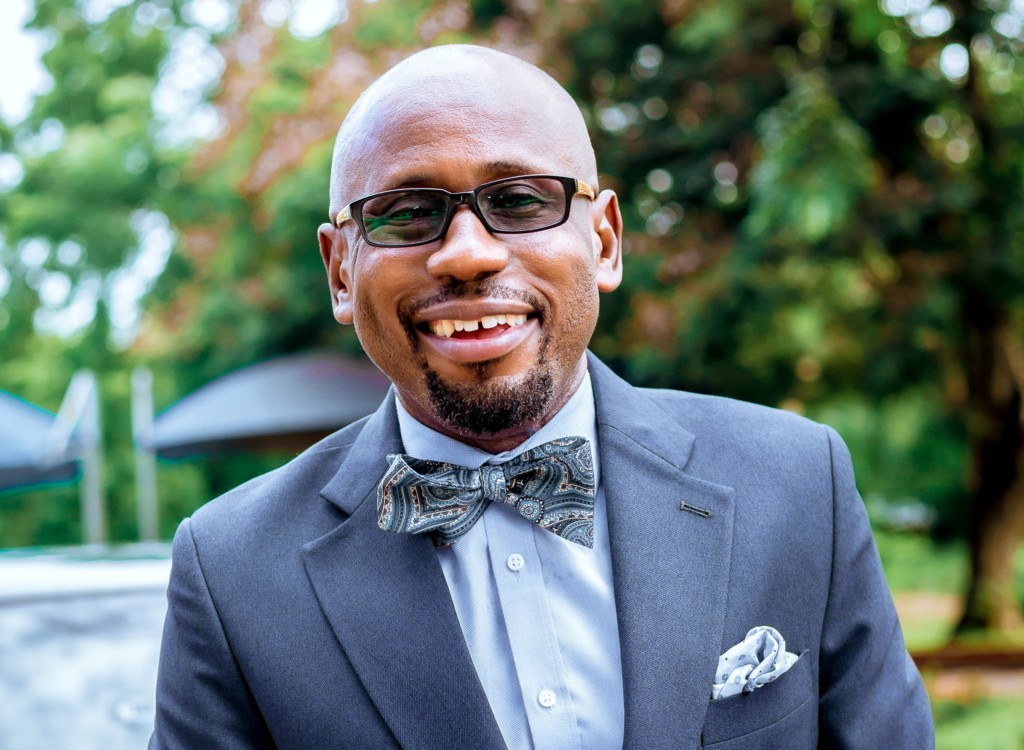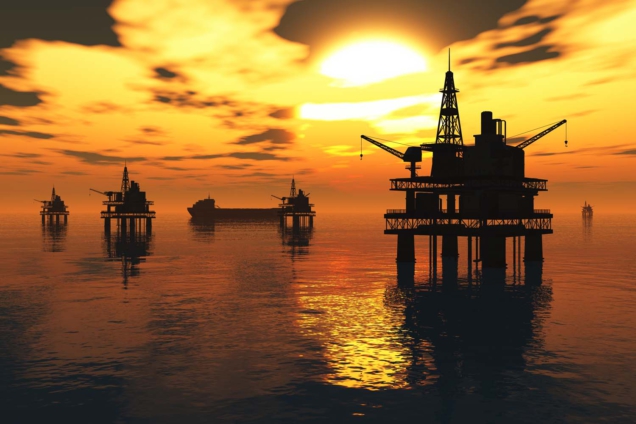Many things are admirable about Ghana, compared to our neighbouring countries. Among these are free speech, fair elections, peaceful transitions of power, and empowered civil society. In some ways, Ghana has more in common with the United States' democracy than many countries on our continent. However, in the not too distant past, the United States seemed to have gone through a dark media era where it seemed President Donald Trump attempted to completely wipe out the boundaries between truth and lies, between actual news and fake news – to the point that the truth did not matter anymore – the same seems to be happening in Ghana from selected civil society actors.
One particular civil society actor, Bright Simons, seems to have taken umbrage at the move by the Ghana National Petroleum Corporation (GNPC) to significantly increase Ghana’s ownership in offshore oil blocks and has communicated his deep misgivings in a multiplicity of articles, the latest being one he penned for the influential Economist magazine. I will attempt in this article to present some misrepresentations in some of the positions held by the leading civil society actor, Bright Simons, and like we do in the academy, present some counter-facts on some of the misrepresentations he made.
There are serious challenges with some recent assertions Mr Simons has made regarding the GNPC's move to ultimately put Ghanaians in complete control of the nations oil resources. It would seem that Mr Simons is either not in full possession of some of these true facts he uses in constructing some of his arguments and therefore in making some of the arguments he makes, ends up smearing the name of the GNPC. GNPC by the way is an institution that was voted by the Natural Resource Governance Institute as the best governed National Oil Company in Sub-Saharan Africa. Indeed, in the recent ENI – Springfield unitisation, Mr Simons also seemed to once again make GNPC the villain in another article.
Like I alluded to earlier, intellectual contestations are normal in the academy so let me point out nine misrepresentations I perceive in relation to GNPC’s latest move to increase ownership in offshore oil blocks and offer some counteracts to some of those assertions.
- “Most analysts nowadays use a US$ 50 per barrel oil price”. FALSE
Mr Simons makes this categorical statement without listing any of the analysts he refers to. These are easily verifiable figures which should have been checked before they were published. The long term price forecast by various analysts (all in US$ per barrel) are:
Morgan Stanley - 60
Credit Suisse - 60
RBC – 67
Commerzbank – 70
CIBC 63
JP Morgan – 60
Deutsche Bank – 60
UBS – 60
HSBC – 63
IHS – 67
Not a single one uses US$ 50 per barrel. With the current oil price of $72 per barrel, it is pretty far fetched to have a valuation figure of US$ 50 per barrel.
2. Kjell Inge Rokke has a windfall of more than $1 billion. FALSE.
This is false because it ignores the US$ 800 million spent by the Aker owner to add approximately 267 million barrels of oil to the two blocks. Moreover, it is profoundly inconsistent with Mr Simons’ own claim that $300 million has been spent on the two blocks. Using Mr Simons’ own analysis, if the price is set at a maximum of $1.1 billion and $300 million has been spent so far, how can the windfall if at all, be more than US$ 1 billion? This is yet another misrepresentation.
3. Aker and TRG have spent only $300 million. FALSE
It would seem that Mr Simons has been skimming through the annual reports of Aker and TRG looking for spendings by Aker Energy and AGM. However, he seems unaware that Aker Energy and AGM have debt and commitments not listed in the annual accounts of their parent companies. Verifiable figures from the GNPC suggests that Aker Energy and AGM have spent between $700 million to $800 million on the blocks.
4. Aker was founded in 2004. FALSE.
Aker was established more than 175 years ago and its history is clearly stated on the Aker website, www.akerasa.com.
5. Lambert Energy had no access to audited reservoir data. FALSE
Mr Simons claims that the independent third party Lambert Energy did not have access to audited reservoir data for the two oil blocks. That is factually incorrect, as third party reservoir data was available in the virtual data room used for the valuation. My sources within the civil society space confirm to me that, on a call with Lambert Energy, Mr Simons said himself that he had not been able to listen fully due to conflicting engagements. On this point, it would seem that Mr Simons does have a full grasp of the facts, and can therefore not make the categorical claim he makes. His pronouncements do not represent the facts.
6. GNPC will merge the fields. FALSE.
Mr Simons claims that GNPC is to merge the fields and create an SPV. How can two fields be merged, physically? Again, Mr Simons makes this postulation to fit his narrative. GNPC is only saying that the joint operator company will be the operator of both fields. The fields and the licenses cannot be merged; that is not possible legally under Ghanaian legislation nor physically unless there is contact between the fields.
7. There are considerable richer discoveries made in Ghana that have not been commercialised, like Wawa and Akasa, and the Erin Energy block. FALSE.
It is unclear why Mr Simons claims that these fields are richer than Pecan and Nyankom. These fields cannot be described as “richer discoveries” by any stretch of the imagination. According to Woodmac, the Akasa field was downgraded to sub-commercial, the Erin Energy block holds no fields bigger than 40 million barrels and Wawa holds 50 million barrels plus gas. Clearly, none of these discoveries is anywhere close to Nyankom and Pecan in Mr Simons’ chosen world of “richer discoveries”. For the avoidance of doubt, Woodmac lists Nyankom at around 130 million barrels.
8. The commerciality of the fields are broadly unchanged since 2018. FALSE.
Mr Simons seems to be ignoring the widely published fact that, in 2018, Aker first added 100 million barrels of oil to the Pecan discovery and then in 2019, discovered 167 million barrels of oil in Nyankom. These investments completely improved the commercial viability of the fields. Also, Aker made the cost of developing the Pecan field cheaper, thereby increasing profitability. Aker achieved this by reducing the break-even from $45 per barrel to $30 per barrel in the new development concept.
Prior to the outbreak of COVID-19 which disrupted the global oil and gas supply chain, Aker was ramping up for a Final Investment Decision on the Pecan Field. In line with this, in early 2020, a Letter of Intent had been issued to Yinson for the construction of the FPSO for the Pecan Field development. Also, Fugro had been appointed to perform geophysical and geotechnical surveys to optimise the Pecan subsea field layout.
9. The owner of Aker said that he and his partners would spend US$4.4 billion to produce oil, then changed his mind and settled on $2.5 billion. FALSE.
Low oil prices experienced in 2020 following the outbreak of Covid-19 revealed that the earlier proposed development concept for the Pecan Field worth $ 4.4 billion with a breakeven price of US$ 45 per barrel was not commercially viable. This necessitated a revision to a phased development concept with a break-even of $30 per barrel making the project more commercially viable.
These are the top nine issues about Ghana’s bold move to take full control of its oil resources that have so far been misrepresented. I pray this article has brought some clarity to some of the issues that have clearly been befuddled.
*****

Professor Robert E. Hinson is based at the University of Ghana Business School but works across several Universities globally. He was recently ranked the #1 Marketing Scholar in Africa.
Latest Stories
-
Real Madrid beat Sevilla to keep pressure on leaders Atletico
53 minutes -
Liverpool put six past Spurs to go four points clear
55 minutes -
Manchester United lose 3-0 at home to Bournemouth yet again
58 minutes -
CHAN 2024Q: ‘It’s still an open game’ – Didi on Ghana’s draw with Nigeria
1 hour -
CHAN 2024Q: Ghana’s Black Galaxies held by Nigeria in first-leg tie
2 hours -
Dr Nduom hopeful defunct GN bank will be restored under Mahama administration
3 hours -
Bridget Bonnie celebrates NDC Victory, champions hope for women and youth
3 hours -
Shamima Muslim urges youth to lead Ghana’s renewal at 18Plus4NDC anniversary
4 hours -
Akufo-Addo condemns post-election violence, blames NDC
4 hours -
DAMC, Free Food Company, to distribute 10,000 packs of food to street kids
5 hours -
Kwame Boafo Akuffo: Court ruling on re-collation flawed
6 hours -
Samuel Yaw Adusei: The strategist behind NDC’s electoral security in Ashanti region
6 hours -
I’m confident posterity will judge my performance well – Akufo-Addo
6 hours -
Syria’s minorities seek security as country charts new future
6 hours -
Prof. Nana Aba Appiah Amfo re-appointed as Vice-Chancellor of the University of Ghana
7 hours

